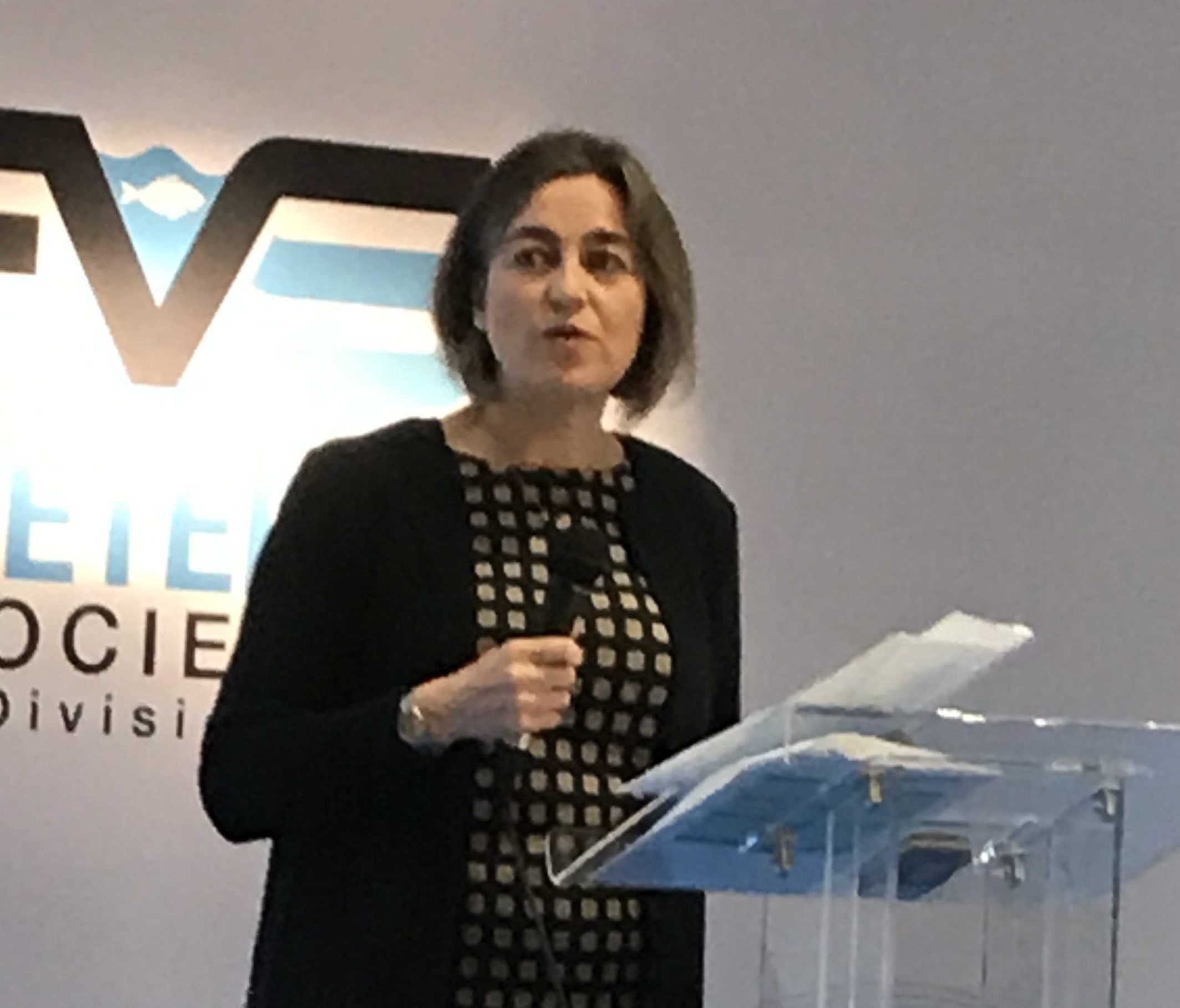Farmers slash medicine spend in lice fight

SCOTTISH salmon farmers have dramatically reduced their use of medicines to treat sea lice, with spending dropping 47 per cent, from £18.4 million to £9.7 million, over the past three years.
The news comes as the industry reported its lowest average sea lice levels for six years, down to 0.46 adult females in 2018, according to the Scottish Salmon Producers Organisation (SSPO).
SSPO chief executive Julie Hesketh-Laird, speaking at the Fish Vet Society conference, near Edinburgh, this morning, said the industry’s change of approach, from medicines to a range of other measures, including cleaner fish and fresh water treatments, had successfully driven down lice numbers.
However, she said the industry will continue ‘to argue strongly for access to traditional medicines if we are to truly conquer the sea lice challenge’.
She said the fact that SEPA (the Scottish Environment Protection Agency) is currently restricting the use of the sea lice treatment emamectin benzoate, even in well operating salmon farms, ‘demonstrates a distinct lack of joined upnesss’.
This is stunting the sector’s ability to rear farmed fish to high welfare standards.
Hesketh-Laird also said it was the industry’s job to spell out more clearly what kind of regulatory regime it thinks might facilitate future growth.
‘The current regulatory regime is not fit for purpose,’ she said, adding that the SSPO had earlier this month urged Marine Scotland tighten its enforcement measures for sea lice control.
‘There are multiple actors with different opinions, and layer upon layer of bureaucracy that we have to fight through to keep our salmon farming sector strong, and this simply doesn’t deliver for anybody’s interest.’
The SSPO also released farm-by farm results for salmon survival today which showed the average monthly salmon survival on farms last year was 99 per cent.
The data release marks the start of a new SSPO-led reporting schedule for sea lice and survival figures.
Companies are now reporting this data after either one month or two, not three, as was the case previously, said Hesketh-Laird.
‘Fish health and welfare is at the very heart of successful salmon farming. In spite of changing and challenging marine conditions, salmon farmers are working successfully to innovate, collaborate, take action and manage fish health and welfare.
‘Scotland is leading the world in the reporting of salmon survival data and in the sustained management of sea lice.
‘This demonstrates our willingness to be open about our operations and standards of fish health and welfare.
‘The sector’s reporting of its performance is above and beyond the many other levels of regulation and voluntary data already shared.
‘From today, we will be publishing more current farm-by-farm sea lice and survival data, moving from three-month reporting schedule we have worked to in the past.
‘This enhanced level of transparency should reinforce trust in this important Scottish farming sector.’
The Fish Vet Society conference, at Houston House hotel, Uphall, continues tomorrow.
Picture: SSPO chief executive Julie Hesketh-Laird at the Fish Vets Society conference today

